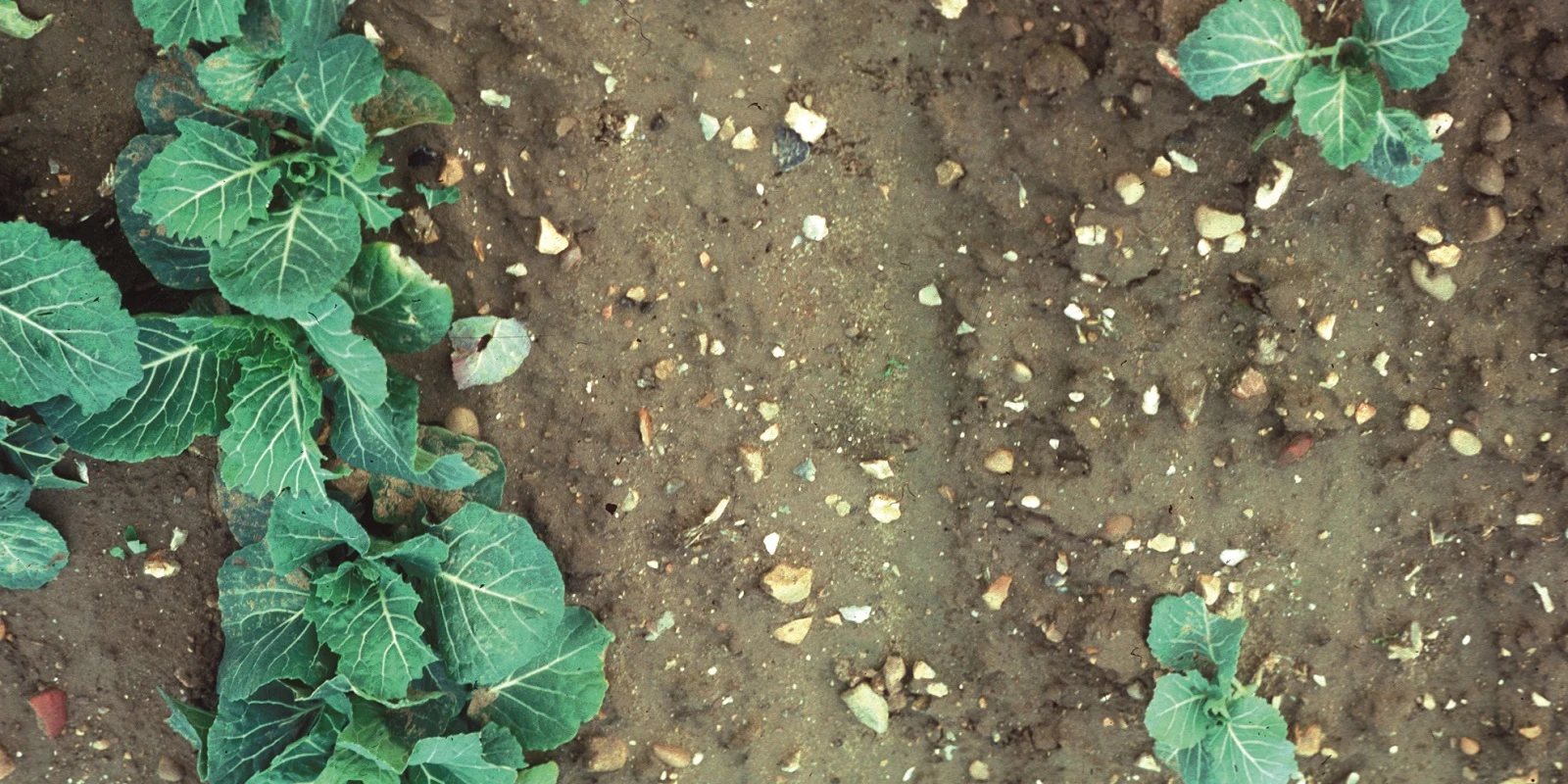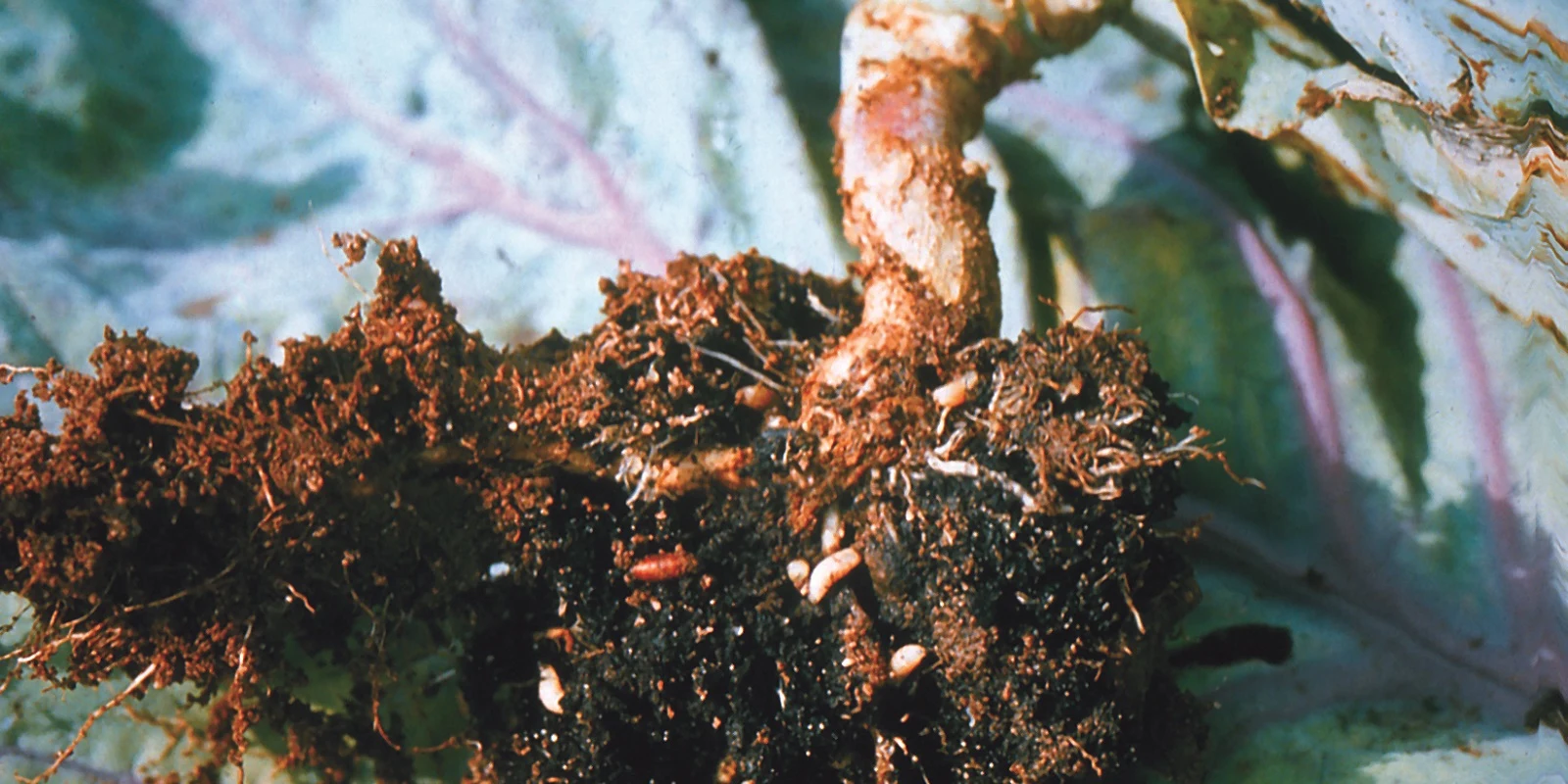
Cabbage root fly
Delia radicum
Identification
The adult flies (5-10 mm long) are relatively inconspicuous and are not dissimilar to a smaller grey coloured version of the common house fly. The white legless maggots are up to 8 mm long and do not have a distinctive head.
Symptoms
The first symptoms to be observed are wilting of the outer leaves which can develop a bluish discolouration similar to nutrient deficiency. Plants can be severely stunted or checked and in some circumstances whole plants can be lost. Young plants are particularly at risk of being killed if attacked soon after transplanting.
Life-cycle
The adults emerge from overwintering pupae in suitable conditions from April to early June and lay small (1 mm) white eggs alongside brassica plants. After a week the eggs hatch and the maggots feed on the lateral roots and later on the main tap root before tunneling up into the main stem. When fully fed (after around 3-4 weeks) the maggots pupate in the soil.
The pupae are approximately 1 cm long and a reddish brown colour. There can be several overlapping generations (usually 2-3/year) throughout the summer months and those appearing in September can invade crops of oilseed rape.
Importance
The cabbage root fly is of economic importance in all areas of the UK where cultivated brassica leaf and root crops are grown.
Threshold
Crops should be treated with a suitable insecticide drench within 4 days of transplanting or at seedling emergence for direct sown crops after the third week in April. Modules can also be treated with a drench prior to planting out and should be treated before the 3 to 4 leaf growth stage.
Due to a lack of available insecticides, swede growers have resorted to protecting their crops with modern polythene insect netting which successfully provides protection by preventing the adults from laying their eggs in the crop.

Cabbage root fly damage.

Treated (left) vs. untreated (right) crop.

Cabbage root fly larvae attacking roots.


